What does kochia look like and how to grow it?
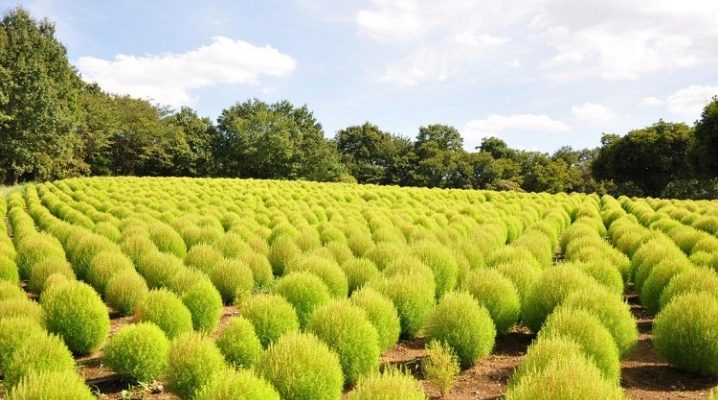
Many gardeners plant various ornamental plants in their summer cottages. Kochia is very popular. Today we will talk about the features of such vegetation, about how to plant and grow it correctly.
Description
Kokhia is also called summer cypress, broom grass, twig. It looks like a beautiful shrub with a lush crown. This ornamental plant takes on its appearance at the beginning of summer and does not lose it before the onset of the first frost. In summer, kohija has a dark green color. In the fall season, it changes to red, yellow or orange. The leaves of such vegetation are thin and soft, without petioles. They are very similar to cypress needles to the touch.
Cochia is quite tightly fixed in the soil, its root system can reach a length of up to 3 meters. She is different strong and well-developed roots, which help her to cope with drought. The stem of the plant is lignified.
This plant is grown both as an annual and as a perennial. Such fluffy vegetation can decorate any area.
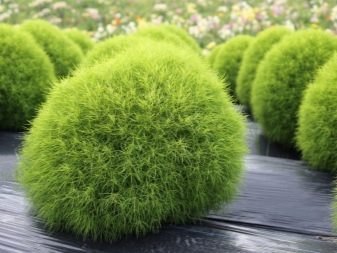
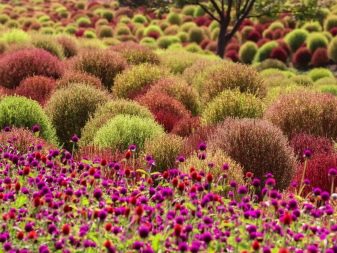
Views
Next, we will get acquainted with individual types of kochia.
- Cochia broom. It is a small and low spherical bush. It is absolutely unpretentious to care for, very resistant to drought. In the autumn season, the vegetation changes its color to red-burgundy. She is able to maintain her decorative appearance until the end of autumn.
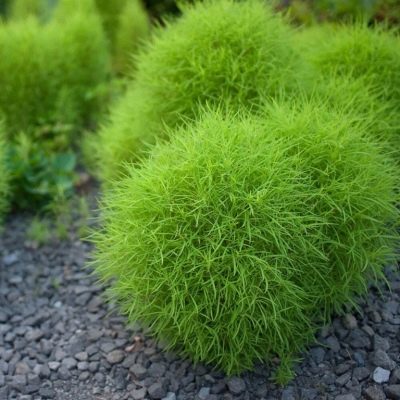
- Cochia hairy. This garden culture was obtained as a result of selection back in the 17th century. It is a highly branched annual bush. Its height can reach 1 meter, its width averages 50–70 centimeters. The leaf blades are narrow, they densely cover the entire bush. This species is often called red cochia. The leaves are pale green in color. By autumn, they become bright red or burgundy. Hairy cochia lends itself well to haircut.
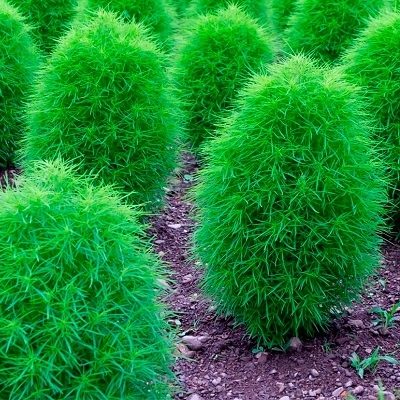
- Kohia Childs. This look is very similar in appearance to the previous variety, but at the same time it is more compact. The plant can grow to a height of 45-50 centimeters. It has light foliage. In addition, even in autumn, the species will not change its colors.
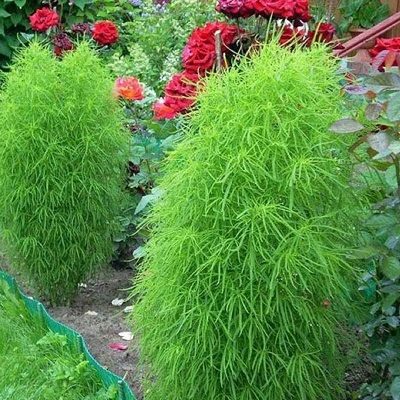
- "Sultan"... This variety looks like a slender bush with a height of 70 to 100 centimeters. At the beginning of the season, the leaves turn into a beautiful emerald hue. In the end, they turn burgundy. The plant easily tolerates pruning.
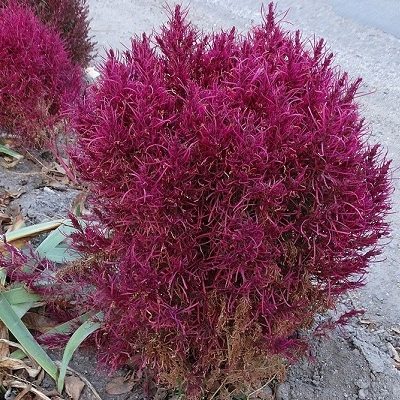
- "Flame". This species has a columnar crown. The vegetation can reach a height of 80–100 cm. The green foliage turns purple in autumn. Small frosts are easily tolerated by the flame.
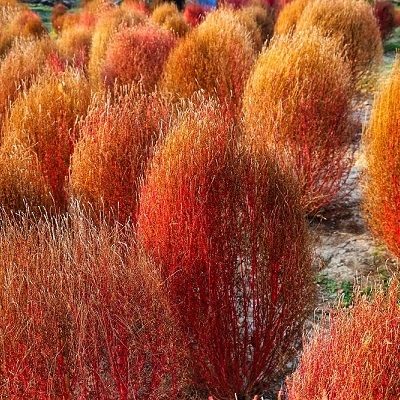
- "Nephritis"... The variety has the fastest growth. Its height reaches an average of 1 meter. Often this type is used to create beautiful green sculptures on the site.
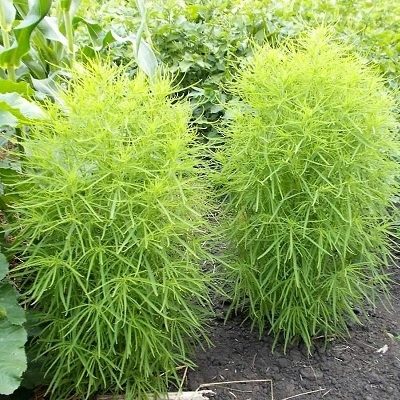
- Shilzy. Bushes of this species are quite dense. Their average height is 1 meter. The width is 50-60 cm. Green leaf blades begin to change their color to purple even in summer.
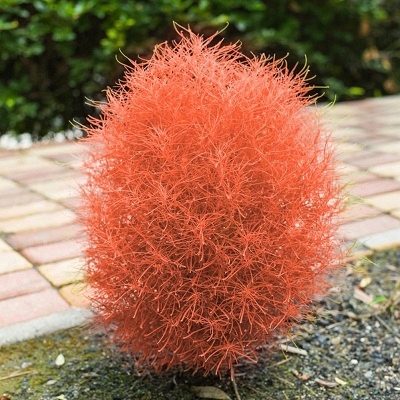
- Cochia "Acapulco Silver"... This variety reaches a height of about 100 cm. Its foliage is bright green, at the ends it has a slight silvery shade. In the fall season, the leaves turn purple. Currently, the variety is quite rare.
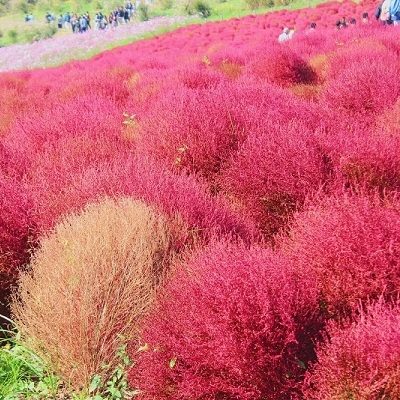
To date, many other varieties have been bred, including Green Lays, Green Forest, Skoparia, Berning Bush. There are also perennial types of kochia, they are rarely used in decorative floriculture. The most famous of this group is the creeping cochia. Such a perennial plant is represented by a bush strongly branching near the base. Its height is only 20-50 centimeters. Shoots on this kochia are long, they are pubescent. Over time, they become red and almost naked. The foliage has a linear or threadlike shape. It can be smooth, fluffy, or even silky to the touch.
The root system is quite strong and sturdy. It extends to a depth of 3 meters. The flower buds are small and barely visible. Flowers are collected in inflorescences in the form of spikelets. Small seeds are formed in them. This perennial kochia is considered a promising crop, as it is full of many useful components. In addition, the variety has a longer growing season, resistance to diseases, pests and temperature extremes.
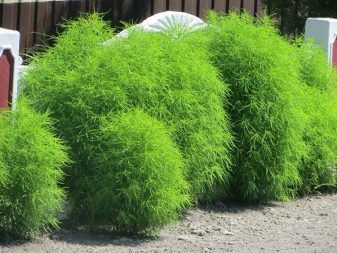

Landing
Now we will analyze how to plant the kochia correctly. This plant can be bought ready-made in the store, or you can grow it at home from seeds.... The planting material is simply laid out in open ground. Good warm weather is essential for vegetation to take root. If you want the seeds to sprout faster, then it is better to pre-treat them with special growth stimulants.
You can grow seedlings. In this case, you need to purchase quality grains. Also, special peat pots or plastic boxes are prepared in advance. The soil mixture is made directly in the prepared containers. To do this, they take a little land from the site, mix it with peat and sand. You should also add some organic fertilizers there.
Remember that kochia is considered an absolutely unpretentious garden crop, so you can sow the material in almost any soil. But it is important that the soil is neutral in its composition. Further, small grooves are made in the ground. The seeds are carefully laid out in the ground. All this is humidified with a spray bottle. The material along with the containers is covered with cellophane. It is not worth tamping the ground, as it must be light and loose in order to allow moisture to pass through. Seedling boxes should be placed in a room where the air temperature is at least 20 degrees Celsius.
At the same time, it is not recommended to place them next to heating equipment, as well as on windowsills on the sunny side.
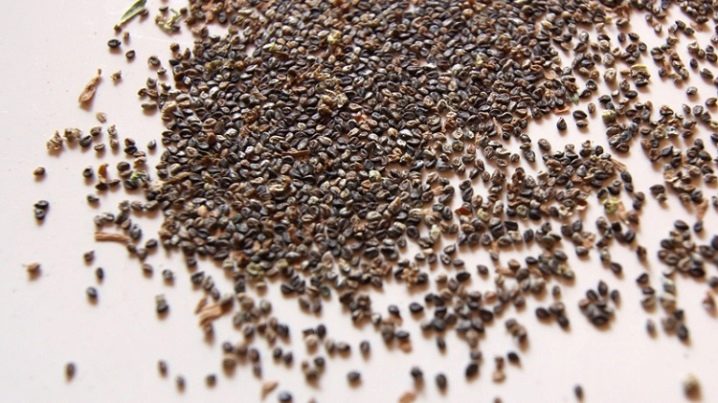
After planting, you need to water the soil daily with a spray bottle. Do this twice (morning and evening). A garden culture emerges in 7-10 days. When the first shoots are formed, the cellophane is carefully removed. After a short time, the plants are planted in separate peat pots. Remember that kochiya loves light, but at the same time does not tolerate intense heat, therefore these containers should also be placed in bright rooms, if necessary, use special phytolamps. To prevent the shoots from becoming sharply weak, light must hit the vegetation for at least 12 hours a day. In this case, photosynthesis will take place without delay.
Be sure to inspect the seedlings. Excessive watering may cause black spots to appear on it. Such instances should be removed immediately. At the same time, clean sand or sawdust is laid on the soil.
As a preventive measure, it is recommended to add a little manganese or dressings to the water for irrigation, which prevent the formation of fungus. Watering should be done only at the root. When the seedlings get stronger and young healthy leaves appear on it, they are transplanted into open ground. You need to choose a suitable place for this in advance. Remember that Kochia does not like shade and waterlogging. For this ornamental plant, open and well-lit areas will be the best option.Most often, planting in the soil is carried out in late March and early April. Shrubs should be planted 40–45 centimeters apart. There should be plenty of free space around each seedling so that they can grow.
The bush can be planted in flower beds in the same way. Moreover, they must be large in order for the plant to grow.
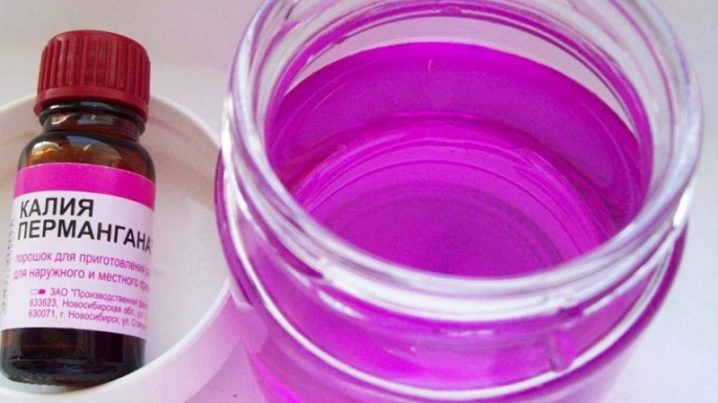
Growing care
In order for the kochia to grow and acquire a decorative look, special care will be required.
Conditions
Kohia will be able to fully develop only in well-lit areas. It is permissible to plant it in partial shade, but then the plants will grow looser and slightly elongated. Cochia should not be grown near groundwater, as this will lead to rapid decay of the root system and further death of the plant.
The best option for such ornamental vegetation is loose soils that allow moisture and air to pass through well. In this case, the acidity should be low or neutral. Throughout the season, it is necessary timely remove all weeds around. It is important to loosen the soil regularly.
Watering
Cochia is considered a drought tolerant horticultural crop. It should be watered in moderation. Do not allow the top layer of the earth to dry out... The plant will need more liquid during rooting and in hot weather. This procedure is recommended to be performed in the evening or in the morning to avoid the appearance of burns on the foliage. It is better to loosen the land around the bushes after watering.
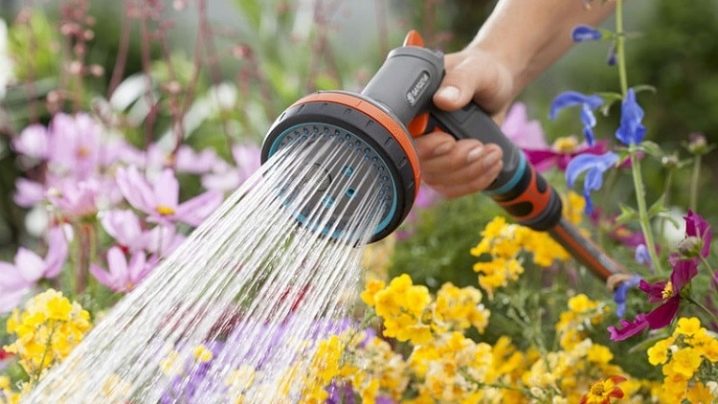
Top dressing
After 10-12 days after planting the seedlings, it needs to be fed. In the summer season, fertilizers are used once every 14 days. To do this, it is better to take complex mineral compositions that contain nitrogen, potassium chloride and superphosphate.
It is important to alternate root and foliar feeding. An excellent option would be homemade herbal tinctures. They can be prepared from a variety of weeds. With the correct use of fertilizer, the leaf blades will be a rich green color.
Transfer
If necessary, the kohija can be transplanted to another location. In this case, the plant is dug up with an earth lump, its shoots must be slightly shortened. After that, the kohija is planted in another area, immediately watered.
Remember that replanting plants for growing at home in pots is impractical. She prefers a lot of free space, it will be too cramped in the container.

Pruning
Kohia will handle pruning easily. It can be given a variety of shapes. To get the most lush appearance, you need to pinch the tops of the shoots. Young bushes should be trimmed in June. You need to carry out 1–2 such procedures per month. After a haircut, the kohija is fed with ammonium nitrate, this will help her recover easily.
There are several options for forming a bush during pruning.
- Ball... At first, it is better to give the kokhia the appearance of a cube, then it is gradually sheared, giving it a spherical shape.
- Column or cylinder... Before cutting, slats are installed around the entire perimeter. They will become the framework. During work, make sure that they are in a strictly vertical position.
- Cone... To make such a shape, it is necessary to draw a circle around the kohija, then a frame of slats, fixed at the top, is fixed along its contours. In the process of trimming, you must gradually move from the top to the bottom of the cone.
- Spiral... It will take a long time to create such a shape. In this case, the work is carried out in two stages. On the first bush, they give an even conical shape. Then a rope is fixed on the lower part of the central stem, it is wrapped around the trunk to the upper part. At the second stage, the rope is attached at the top, with the help of a secateurs, a spiral shape is created. After that, rounded twigs are made using special garden shears.
- Square... This shape is often used for bushes that run along the paths on the site.It can be shaped with a simple pruning shear.
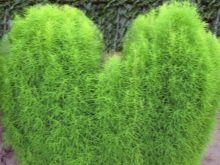
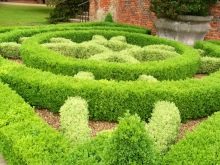
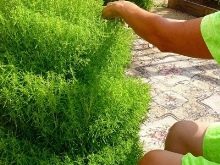
Wintering
Annual species live outdoors for only one season. In autumn - before the onset of frost - vegetation must be removed from flower beds... Perennial varieties must be prepared for winter. Otherwise, they will begin to freeze and simply die. Kohia is covered with a special protective material. First, you need to shorten the shoots a little. In the spring, the covering material is carefully removed.
Reproduction
Such decorative bushes are propagated by sowing seeds. As a rule, they have excellent germination. In this case, there are three main methods of sowing:
- in a container for seedlings;
- in open ground;
- self-seeded seedlings;
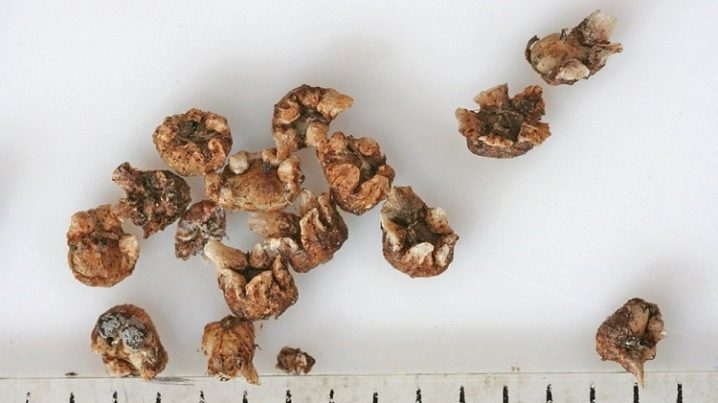
Diseases and pests
Cochia is considered disease and parasite resistant. But sometimes she is amazed black leg... This happens, as a rule, due to waterlogging of the soil. The disease develops rather quickly and in a short amount of time can lead to the death of the plant. When infected with a black leg, dark spots of different sizes are formed near the root collar. The trunks become too thin, then they begin to rot. If there are several infected plants on the site at once, then they are immediately removed and burned so that they do not become a source of spread of infection. In case of infection, it is necessary to stop for the duration of watering. At the same time, the soil is sprinkled with calcined sand a little, then it is watered with a fungicide solution.
If the blackleg continues to develop, then the vegetation must dive, changing the soil. Also sometimes settles on ornamental bushes spider mite. It is quite difficult to see him. This parasite is a small insect that is only 0.3–0.4 mm long. When a spider mite appears on the leaf blades, light small spots can be observed, these are puncture sites. In case of severe damage, the tops of the shoots will be covered with a thin gray-white cobweb. Gradually, the foliage will turn gray and fall off, the garden culture will grow poorly.
To get rid of a harmful insect, it is better to use insecticides right away.
Application in landscape design
Cochia looks beautiful in almost any landscape design... A composition consisting of several slender compact bushes looks unusual. At the same time, they can be surrounded by short decorative grass of different colors.
If the summer cottage is large, then you can plant several such compositions.
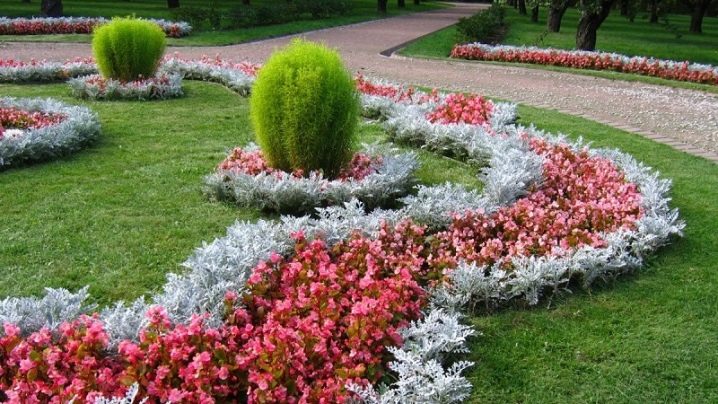
You can place several tall ornamental bushes among the flower plantings. At the same time, flowers can be any, it is desirable to combine several types and colors at once. Kochii in this case are often planted in small, even rows.




































































The comment was sent successfully.